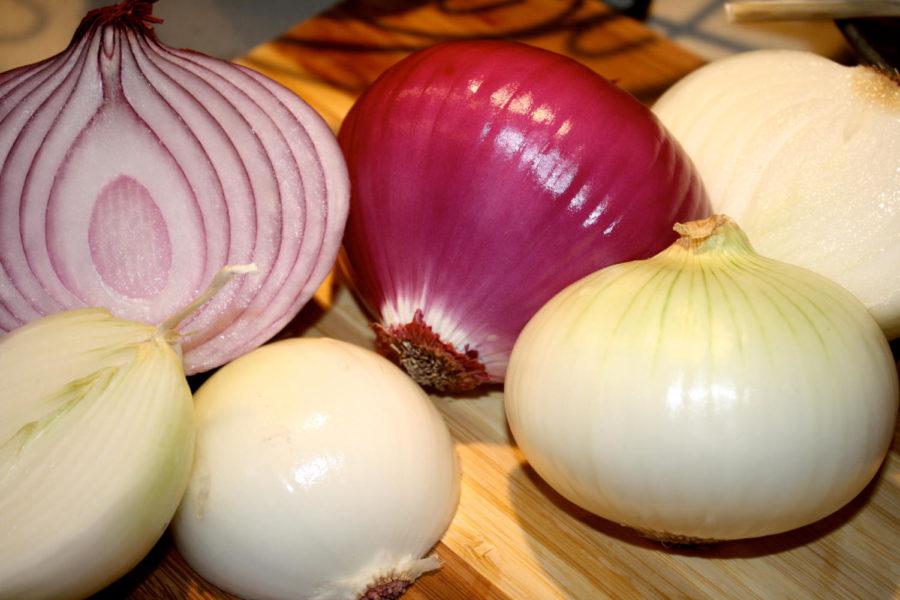Onion varieties: Multiple colors spice up supper
Don’t cry; anyone can figure out onions. Above showcases red and yellow onions. Red onions are used as a garnish and have a sweet flavor. Yellow onions are used more frequently due to their strong flavor. They are the most popular onions according to the National Onion Association.
October 2, 2013
From raw to caramelized and from marinated to roasted and sauteed, onions can be found in a wide range of recipes from breakfast to supper and nearly every ethnic cuisine. They often provide the main flavor for soups, stews, salads, sandwiches, meat roasts and casseroles, as they are one of the most flavorful vegetables. According to the National Onion Association, onions are the third largest fresh vegetable industry in the United States currently with 20 pounds consumption per capita.
Onions have seen a 70 percent increase per capita in the past two decades. Containing no fat, sodium or cholesterol, onions are high in fiber and a great source of vitamin C among other nutrients. Due to their near year-round availability as well affordable price, onions have been around for centuries and are still popular today.
Yellow onions are the most popular for consumption. These onions account for more than 87 percent of the U.S. onion crop according to the National Onion Association. Ranging in all sizes, yellow onions are round bulbs with a flaky golden-yellow skin and a creamy yellow flesh.
They are a great all-purpose onion for all types of foods and have a mild to strong sweet flavor which makes them popular.
Yellow onions are best prepared by cooking, sauteing and grilling to retain their juice and crispness. Because of their strong flavor, they are often found in soups, stews, sauteed dishes, cooked roasts, casseroles and many other dishes. Valued for their rich flavor, yellow onions are the popular choice.
Often found raw and uncooked on salads and sandwiches, red onions account for about eight percent of the United States onion crop.
Red onions can be prepared raw or by grilling, charbroiling or roasting in an oven. Due to their bright red-purple color layered throughout the white flesh, they are often used for garnishing purposes more than their mild sweet flavor. With slightly less water content than yellow onions, red onions also possess a rather distinct pungent ending taste and thus are not highly favored for flavoring purposes.
White onions make a great secondary option. They are best when sauteed and are used primarily for soups, salads and white sauces. They possess a milder flavor than yellow onions, they make a good back-up or secondary onion when yellow onions are unavailable.
Like red onions, green onions are often used for garnishing purposes. At the base of the bright green shoot is a small white bulb. The green shoots output a distinct grassy onion taste to them and so are often used in oven-baked and sauteed dishes.
They can be used as a topping or ingredient. The bulb can be cut up and used as well as the shoot, but the shoot is most commonly used. Green onions can top mashed potatoes, scrambled eggs, casseroles, roasts and small shreds can also be pressed into breads before cooking to give a slight onion flavor to the bread. Green onions are valued for their color and mild flavor.
Dozens of onion types and varieties are available for consumption. Knowing the best onion to use for different types of cooking is a skill gained through experience as well as personal preference. Onions make a fairly inexpensive, versatile, and healthy addition to any meal and are valued primarily for their distinct flavor.











